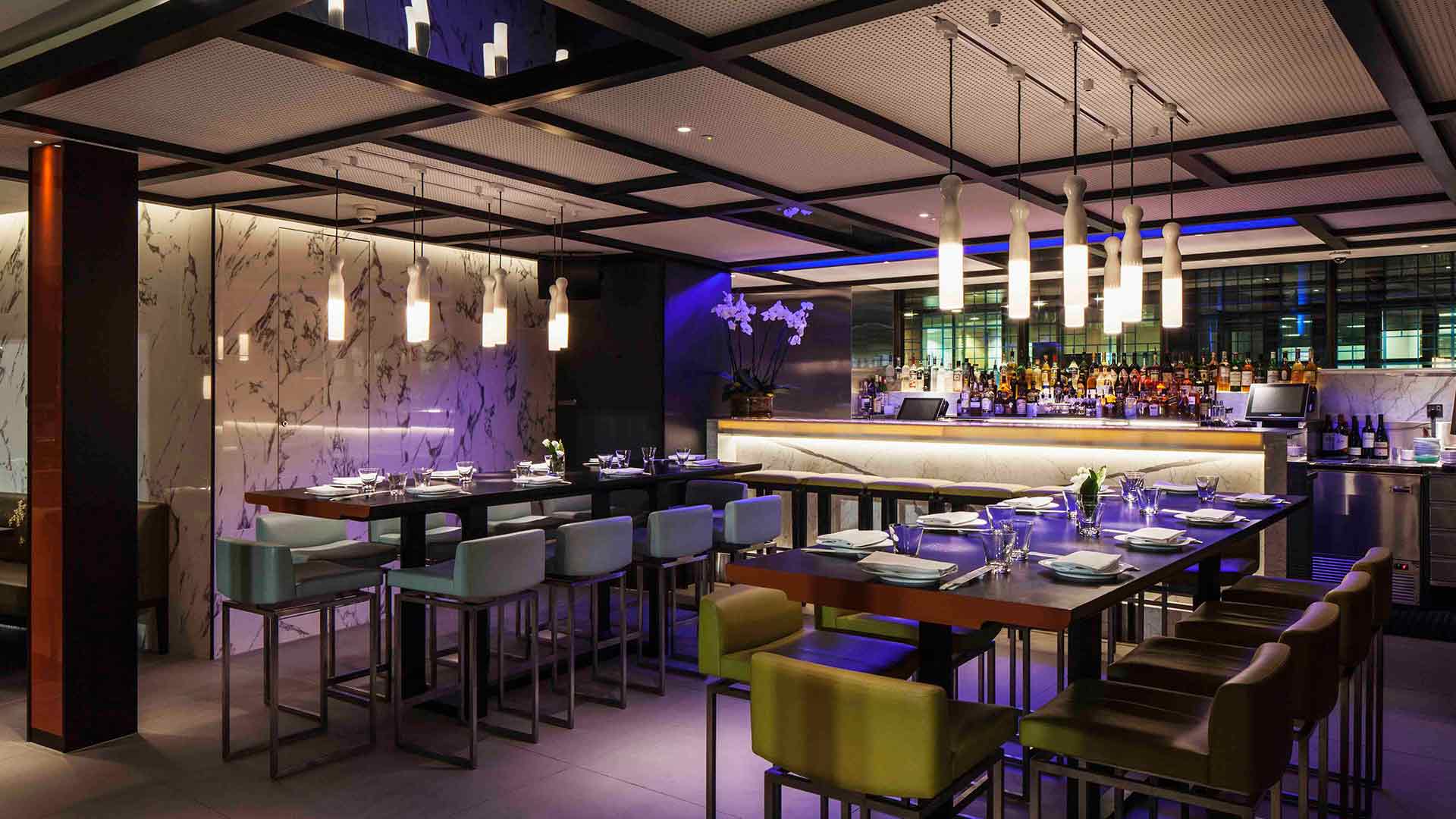Propping up the bar
Open Table, the online restaurant reservation service, conducted a survey recently about the rise in popularity of bar side dining here in the UK. A staple dining spot in North America, it’s clear that we’re favouring this type of setting as an alternative to sitting in a restaurant itself.
With this in mind, it’s no surprise restaurants are investing in their bar areas to satisfy customers’ preferences. Lighting is a huge factor in all of this and can make or break a space, no matter how wonderful the interior design is: it has the power to create the perfect ambience and set the right tone.
A bar traditionally provides the focal point within a restaurant and should draw you towards it when you enter; therefore light levels are usually higher over the bar than in the rest of the space. With the increasing trend of bar dining, the approach to lighting needs to be adjusted to suit its changing role, otherwise restaurateurs risk an in-balance of atmospheres and upsetting the character and flow of a restaurant.
People dining at the bar may want to be at the centre of all the hustle and bustle, but they don’t necessarily want to feel like they’re being spotlighted on a stage in front of the other diners; they still want a level of anonymity. This can be achieved by keeping light levels low over the counter itself and focusing the lighting to the verticals behind the bar ensuring it’s still the “focal point” in the space, while, at the same time, providing visual interest for diners at the bar.
Pendants dropped down over the counter or table lamps can be introduced to create a sense of intimacy, though careful consideration should always be given to the positioning of these to ensure views aren’t blocked and the counter’s still functional.
Often, bar side dining comes hand in hand with open kitchens; in these instances consideration should be given to how the lighting in these two areas sits alongside each other and the views through that are created.
In a closed kitchen, the lighting is functional to provide a safe working environment; bright homogenous light, which will be in stark contrast to the dimmed lighting in the bar area. However, where the kitchen is open and visible to the bar area, it’s important to ensure that light doesn’t invade into the more relaxed dining space. Heat lamps are a functional and decorative way to create a divide between the two spaces.
Image:© James French


